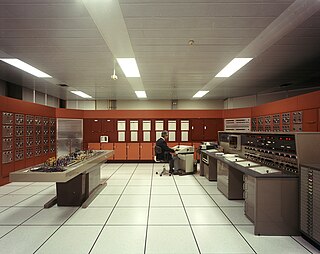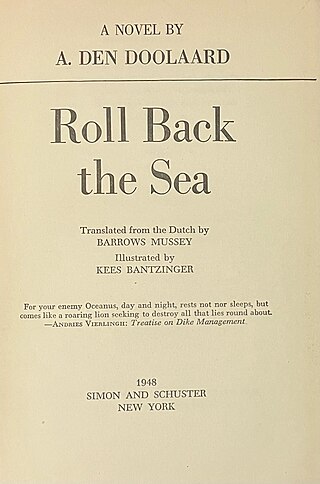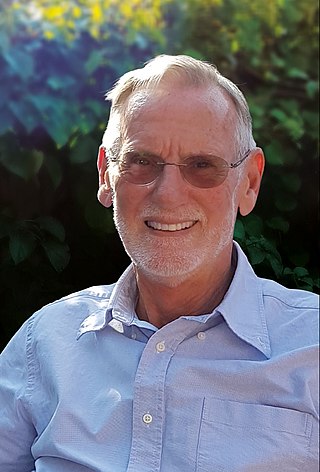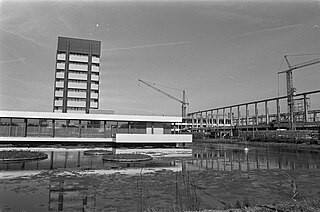
The Afsluitdijk is a major dam and causeway in the Netherlands. It was constructed between 1927 and 1932 and runs from Den Oever in North Holland province to the village of Zurich in Friesland province, over a length of 32 kilometres (20 mi) and a width of 90 metres (300 ft), at an initial height above Amsterdam Ordnance Datum of between 6.7 metres (22 ft) along the section at Friesland, and 7.4 metres (24 ft) where it crosses the deep channel of the Vlieter. The height at the greater sea depths west of Friesland was required to be a minimum of 7 metres everywhere when originally constructed.

The Oosterscheldekering, between the islands Schouwen-Duiveland and Noord-Beveland, is the largest of the Delta Works, a series of dams and storm surge barriers, designed to protect the Netherlands from flooding from the North Sea. The construction of the Delta Works was a response to the widespread damage and loss of life in the North Sea flood of 1953.

Rijkswaterstaat, founded in 1798 as the Bureau voor den Waterstaat and formerly translated to Directorate General for Public Works and Water Management, is a Directorate-General of the Ministry of Infrastructure and Water Management of the Netherlands. Its role is the practical execution of the public works and water management, including the construction and maintenance of waterways and roads, and flood protection and prevention. The agency was also involved in the construction of big railway projects such as the Betuweroute and the HSL-Zuid.

The Deltar was an analogue computer used in the design and execution of the Delta Works from 1960 to 1984. Originated by Johan van Veen, who also built the initial prototypes between 1944 and 1946, its development was continued by J.C. Schönfeld and C.M. Verhagen after van Veen's death in 1959.

Johannes Aleidis (Johan) Ringers was a Dutch hydraulic engineer and politician. He was director-general of Rijkswaterstaat and then director of the Dutch East Indies railways. Ringers was charged with reconstruction as a government commissioner in 1940, but was later interned by the Germans. After the war he became Minister of Public Works and Reconstruction in the Schermerhorn and Beel I cabinets. He could not agree with the Dutch East Indies policy and resigned in 1946. Johan Ringers was the brother of Hendrik Ringers, the founder of Ringers chocolate factory. Johan was member in the supervisory board in that company

Johan van Veen was a Dutch hydraulic engineer. He is considered the father of the Delta Works.

Het verjaagde water is a 1947 Dutch non-fiction novel written by A. den Doolaard, which gives an account of the recovery works to repair dike breaches after the October 1944 Inundation of Walcheren as part of operations by The Allies of World War II during Operation Infatuate. Researchers from Delft University of Technology have found high levels of historical accuracy in den Doolaard's descriptions of the events that took place, the methods used to close the dikes and the key people involved. Den Doolaard assigned pseudonyms to most of the main characters and organisations. The name A. den Doolaard is also a pseudonym, the author’s real name being Cornelis Johannes George Spoelstra Jr.

The Volkerakdam or Volkerakwerken is the name given to a group of hydraulic engineering structures located between Goeree-Overflakkee and North Brabant in The Netherlands. The works are not a single dam, but are composed of three distinct structures: a dam between Goeree-Overflakkee and Hellegatsplein, a series of locks from Hellegatsplein to North Brabant, and a bridge from Hellegatsplein to Hoekse Waard. The works cross three separate bodies of water: the Haringvliet, Hollands Diep and Volkerak. The works together comprise the fifth project of the Delta Works.

Pieter Jacobus (P.J.) Wemelsfelder was a Dutch hydraulic engineer who made significant contributions to the field of hydrometry in the Netherlands, and in hydraulic engineering internationally. In addition to his involvement in the design and planning of the Delta Works, he published widely and is notable for the first use of probability theory in the design of flood levels.
Jo Johannis Dronkers was a Dutch mathematician who is notable for the development of mathematical methods for the calculation of tides and tidal currents in estuaries. His work formed much of the mathematical basis for the design of the Delta Works. He attended the 1954 International Congress of Mathematicians in Amsterdam, where his work was discussed by David van Dantzig.

Frank Spaargaren was a Dutch hydraulic engineer who was one of the main designers of the Oosterscheldekering and served as a director of the Waterloopkundig Laboratorium in Delft.

The Waterloopkundig Laboratorium was an independent Dutch scientific institute specialising in hydraulics and hydraulic engineering. The laboratory was established in Delft from 1927, moving to a new location in the city in 1973. The institute later became known as WL | Delft Hydraulics. In 2008, the laboratory was incorporated into the international nonprofit Deltares institute.

Pieter Philippus Jansen was a Dutch civil engineer and hydraulic engineer who made significant contributions to hydraulic engineering in The Netherlands. He spent the majority of his career with Rijkswaterstaat, working on several major projects including the first phase of the Delta Works and leading the reclamation and repair efforts following the inundation of Walcheren.

Jan Fokke Agema was a Dutch hydraulic engineer and professor at Delft University of Technology. He is notable for his design of the harbour entrance at Hoek van Holland and involvement in the construction of the Oosterscheldekering. The prof. dr.ir. J.F. Agemaprijs is named for him, and has been awarded every five years since 2000.
A compartmentalisation dam is a dam that divides a body of water into two parts. A typical use of such a dam is the regulation of water levels separately in different sections of a basin. One application of a compartmentalisation dam is to facilitate closures of areas with multiple tidal inlets, such as in the case of the Delta Works.
Emmericus Carel Willem Adriaan "Wim" Geuze was a Dutch civil engineer who contributed to the development of soil mechanics, and the founding of the geotechnical engineering journal, Géotechnique. He was head of research at the Laboratorium voor Grondmechanica in Delft, and professor of soil mechanics at Delft University of Technology and the Rensselaer Polytechnic Institute.
Albert Sybrandus Keverling Buisman was a Dutch civil engineer and Professor of Applied Mechanics, who was instrumental in establishing the Laboratorium voor Grondmechanica in Delft. He made notable contributions to the development of soil mechanics in the Netherlands.

Deltares is a Groot Technologisch Instituut (GTI) in the Netherlands specialising in hydraulic engineering research and consulting, along with water management, geotechnics, and infrastructure. The organisation's research mainly focuses on rivers and river deltas, coastal regions, and offshore engineering. As of 2020, Deltares employed over 750 full-time equivalent (FTE) staff members from 42 nationalities, located in Delft and Utrecht. The turnover in 2020 was €112 million.

Hendrik Wortman was a Dutch civil engineer. Born in Amersfoort, Utrecht, he graduated from Delft Polytechnic in 1880 and joined the Rijkswaterstaat. He took offices throughout the country, focusing particularly on questions of water management and hydraulic engineering, until he was seconded to the Ministry of Public Works, Trade, and Industry in 1894. In this capacity, he developed several infrastructure projects, including a harbour in Scheveningen, while preparing exploratory studies for damming of the Zuiderzee.

The Maatschappij tot Uitvoering van Zuiderzeewerken (MUZ) (English: Society for the Execution of the Zuiderzee Works) was a consortium of dredging contractors in the Netherlands, formed in August 1926 for the specific purpose of executing the Zuiderzee Works. The Zuiderzee Works comprised a number of significant hydraulic engineering projects designed to dam the Zuiderzee, a large shallow inlet of the North Sea, to prevent flooding and reclaim land for agricultural and residential use.























